Singapore’s Clean Energy Dilemma Is a Warning for Small Nations
(Bloomberg) -- Singapore’s desire to shift to renewable sources of energy is running up against its geographic limitations. It hasn’t got enough space for large solar installations, there are no major rivers for hydro and what little breeze the tropical city-state gets isn’t sufficient to push a wind turbine.
That’s forced the Southeast Asian financial and transport hub to rely on imports in its plans to transition away from fossil fuels. It’s a common strategy for small places -- Hong Kong, Monaco and Bahrain are in a similar position -- but it’s dependent on nearby countries being willing to export carbon-free power.
For Singapore, its plan to bring in enough clean energy from overseas to meet 30% of its needs by 2035 has already hit a snag. Neighboring Malaysia banned renewable electricity sales late last year to prioritize its own efforts to decarbonize, underscoring the risks ahead for import-reliant nations.

“Every country around the world is seeing increased demand for renewables,” said Tim Rockell, the director of KPMG’s Global Energy Institute in the Asia-Pacific, who has advised government agencies in the region on energy policy. “And exporting it doesn’t always look politically expedient.”
In terms of the overall climate impact, it doesn’t actually matter where the fossil fuels abatement takes place. But in a world where countries and companies will be increasingly using their green credentials as a competitive tool, being a laggard could put places like Singapore at a disadvantage when it comes to attracting both capital and talent.
Tiny Monaco is acquiring renewable solar and wind projects in France, but experts say there’s no guarantee that supply won’t be interrupted. Hong Kong, which currently generates less than 1% of its power from renewables, may be forced to compete for carbon-free electricity with much bigger Chinese provinces. In the Middle East, Bahrain is looking at floating solar and also wants to import clean power from its neighbors.
Even larger nations with high population densities will find the transition a lot more difficult than massive countries like China, which is adding the equivalent of Singapore’s solar capacity every few days. Crowded South Korea is pursuing the world’s biggest offshore wind project off its southwest coast, while in Japan a lack of space may force it to consider more nuclear power even after the Fukushima disaster made it deeply unpopular.

Small-scale nuclear is one of the few local low-carbon power options available to Singapore, although there are challenges both with the technology and the disposal of atomic waste. The country is “keeping its options open” on nuclear energy in the longer term, depending on how the technology advances, Singapore’s Energy Market Authority said in a response to questions.
Even with imports, Singapore will still fall short on decarbonizing electricity generation, and may have to pursue nuclear to move away from liquefied natural gas, said Vijay Sirse, chief executive officer of Destiny Energy Pte Ltd., a clean-power consultant in the city-state.
See also: Can Small Nuclear Reactors Really Help The Climate?: QuickTake
Singapore, which currently generates 95% of its electricity from imported gas, will also be adding some solar, but only enough to get it to 4% of the energy mix by 2030. The lack of local options and the major role fossil fuels refining and trading plays in its economy may be one reason why the country has yet to set a net-zero carbon target.
Setting such a goal is being studied “very carefully,” Finance Minister Lawrence Wong said in December. “We will ensure that all of the policies we have -- whether it is a carbon tax, whether it is decarbonizing our power supply -- all of it aligns to that particular target.”

The city-state is hoping to import some of its renewable energy needs from Indonesia, with two consortia of companies looking at solar power for export projects in the archipelago. There is, however, no guarantee that Indonesia will maintain steady exports as domestic demand rises, KPMG’s Rockell said.
The first ever trial shipment of liquid hydrogen left Australia for Japan last month, and the fuel has the potential to help countries like Singapore green their energy mixes, although there are still doubts about its economic viability and low-carbon credentials.
Singapore is working on a trial to import renewable hydropower from Laos via Thailand and Malaysia. Talks are also underway on building an undersea cable to bring in solar electricity from the north of Australia.
That Sun Cable project is an example of a “buy not build” model that will become increasingly common for compact nations, said David Skilling, director of Landfall Strategy Group, which advises small, advanced economies.
“Singapore, Monaco and Hong Kong are challenged, but many small countries can do well,” he said. “Several land-constrained small economies like Switzerland and Belgium have built nuclear power plants and the Netherlands has just approved funding for more nuclear power.”
More stories like this are available on bloomberg.com
©2022 Bloomberg L.P.
KEEPING THE ENERGY INDUSTRY CONNECTED
Subscribe to our newsletter and get the best of Energy Connects directly to your inbox each week.
By subscribing, you agree to the processing of your personal data by dmg events as described in the Privacy Policy.
More renewables news

World Has Record Hot January Despite Outlook for La Niña Cooling
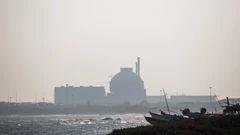
India Set to Ease Nuclear Laws to Draw Private Capital
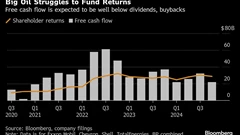
Exxon, Chevron Succumb to Oil-Refining Slump as Tariffs Loom
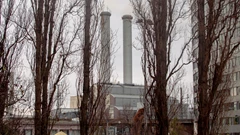
Germany Opens Way For Gas Beyond 2035 With Subsidy Extension
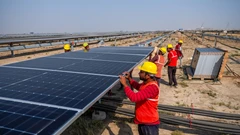
India Says China Dominance Is a Risk to Clean Energy Transition
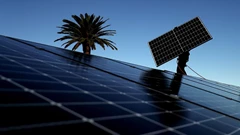
Goldman Sachs AM Seeks Up to $3 Billion for Climate Credit Fund
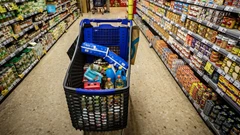
DeepSeek and Ozempic Are Complicating Decarbonization Forecasts

The Global Climate Order Teeters Under Second Assault by Trump

Trump Allies Eye Green Power in ‘All of the Above’ Energy Push
















